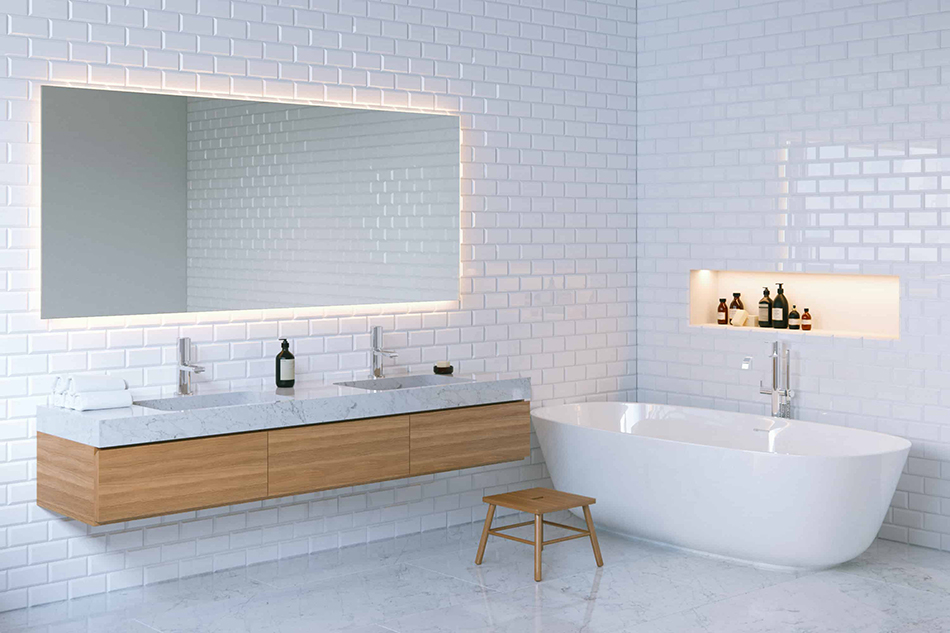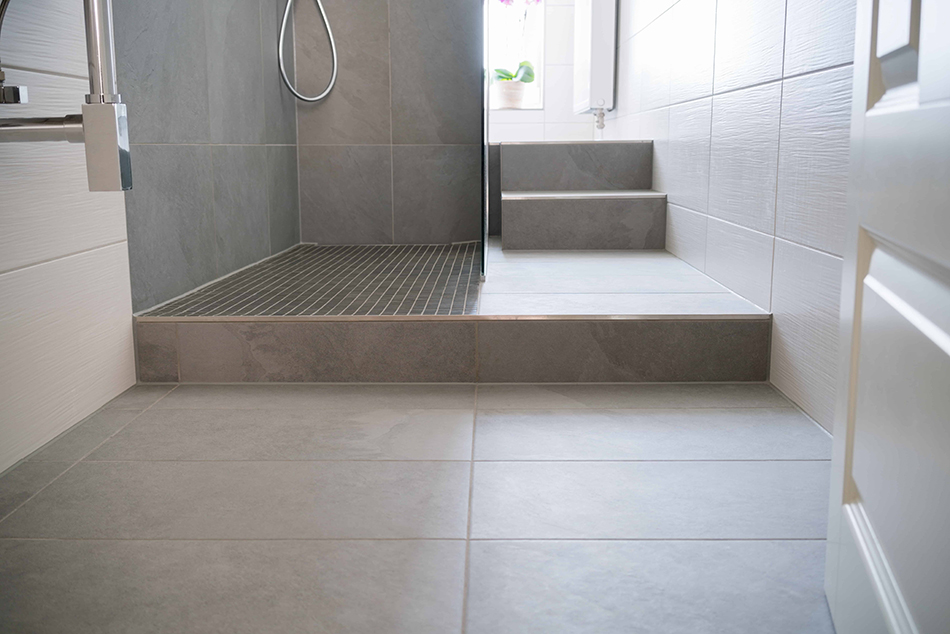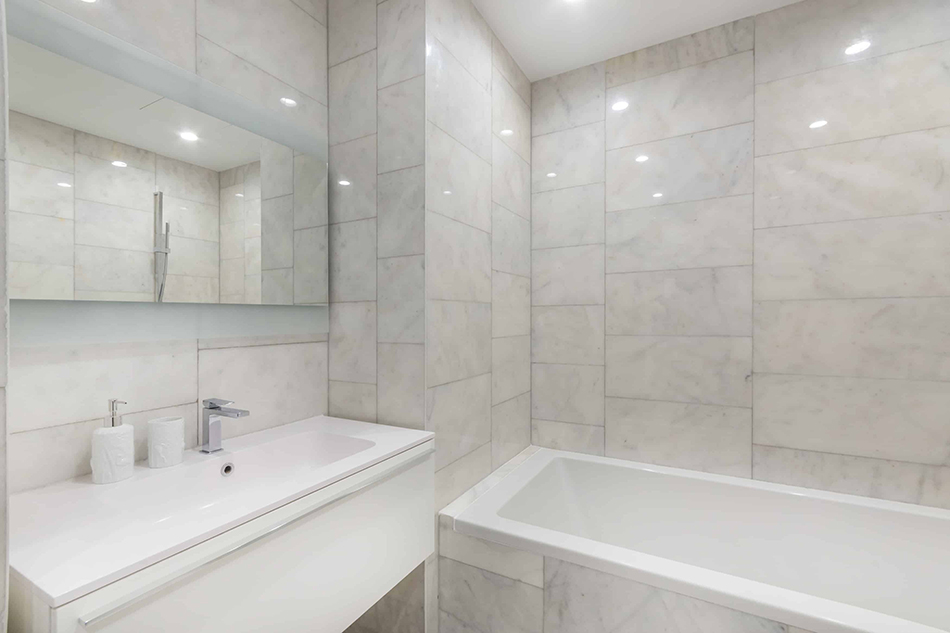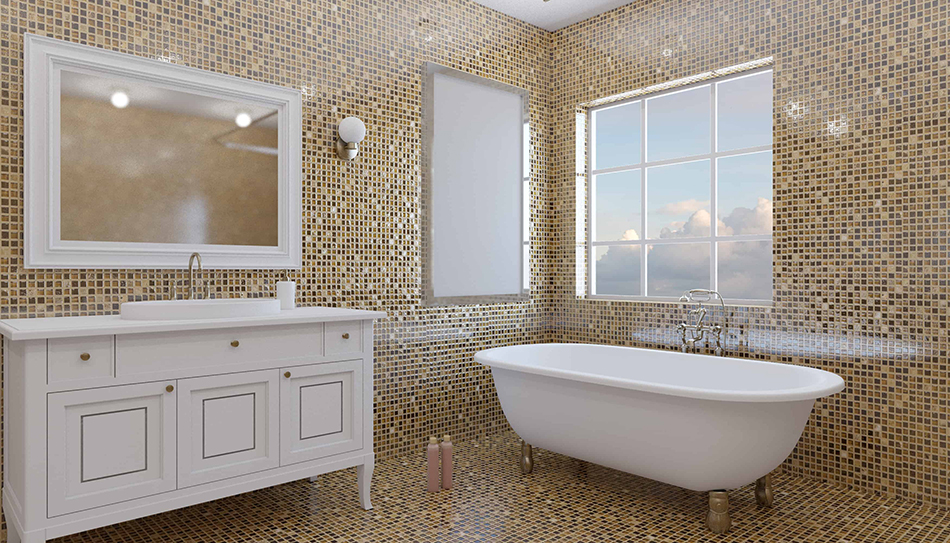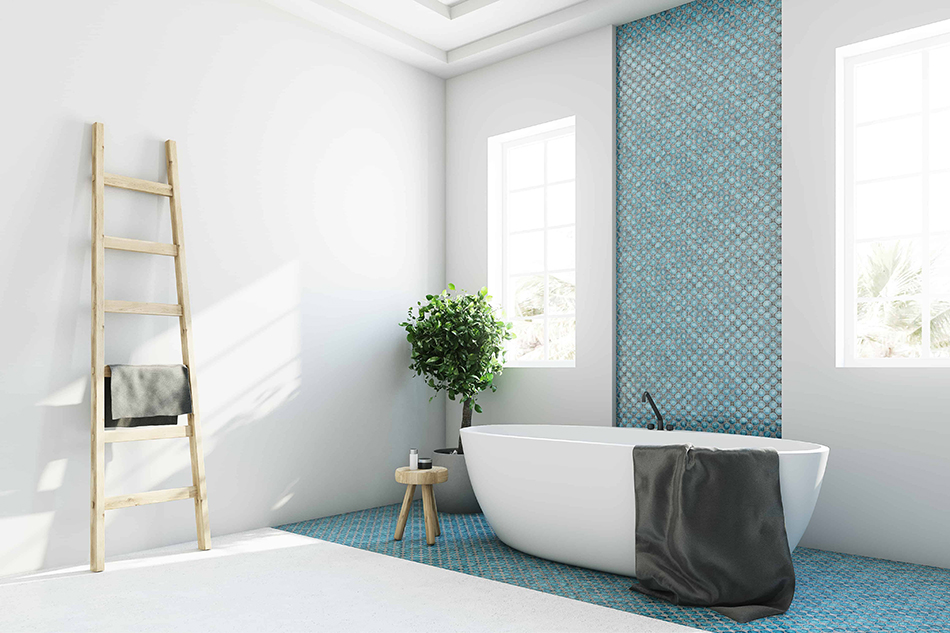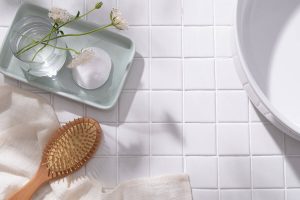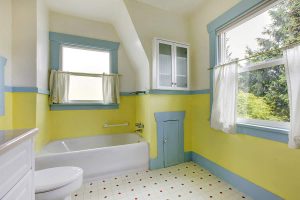Tiles are one of the most popular options for bathroom finishing. They are an easy way to create the perfect bathroom, and they come in several forms, ceramic, porcelain, timber effect, and stone effect, among others.
If you’ve ever had them installed, then it is not difficult to guess the reason why tiles are such a popular choice for bathroom finishing. In this article, we’ll explore the pros and cons of fully fixing your bathroom and help you decide if you fully tile your bathroom.
Why Have Tiles on the Bathroom Floor?
Floor tiles come with several advantages. They are durable, especially in bathrooms. The bathroom is usually such a heavy-traffic room which means that the flooring needs to be solid enough to withstand all the foot traffic. Tiles are just equal to this task, they do not wear out or fade like lino, and many people love them for this.
Tiles are also a very hygienic option. They prevent mold from growing on your bathroom floor. The bathroom floor is wet several hours a day, and wet floors are the perfect environment for bacteria to thrive.
The bathroom is also often humid and warm, which is the perfect environment for germs to grow. It’s easier for this to happen in rugs, carpets, and shower mats because these surfaces absorb moisture and take a lot of time to dry. Tiles, on the other hand, are easy to keep dry at all times, preventing germs.
Waterproofing is another great benefit of floor tiles. If you’re ever to have a spill, leak, or drip inside your bathroom, you never have to worry about how to dry out your bathroom because, with tiles, all you need to do is wipe the floor surface clean. You can’t do this as easily with surfaces like laminate or lino.
Why Have Tiles on Your Bathroom Wall?
There are several benefits to having tiles on the walls of your bathroom. For one, they are aesthetically pleasing. The visual appeal that comes with having tiles on your bathroom floor is second to none. From patterns, feature walls, and tiling layouts to tiling surface types, tiles on the bathroom walls create that perfectly stunning look that everyone loves.
More still, bathroom floors are not the only part of your bathroom that needs waterproofing. Spills and splashes can also ruin your walls unless they’re properly waterproofed.
Wallpaper or paint can’t do this job as they’re susceptible to stains and watermarks and would need to be changed very often if you want your bathroom to keep looking beautiful. Tiles, on the other hand, last for years when they’re properly maintained.
Do you Need a Fully-Tiled or Half-Tiled Bathroom?
The argument about having a fully-tiled or half-tiled bathroom means whether you want to cover every floor and wall space in your bathroom with tiles or if you would tile just the area most susceptible to wetness.
One of the most important functions of tiles in the bathroom is to stop water from damaging the walls, so in half-tiled bathrooms, tiles are only used in areas such as the shower enclosures, its surrounding walls, and the areas surrounding the sink and tub.
To decide whether to go for a fully-tiled or half-tiled bathroom, you should first consider what style you’re going for with your bathroom décor.
If you’re going for an overall contemporary design or a wet bathroom, then full tiles are a better option for you. On the other hand, tiling just the wet areas could be either contemporary or traditional, depending on how you do the rest of your décor.
The way you decide to tile your bathroom will determine how much more you can do with it in terms of décor. With half-tiled bathrooms, you have more creative freedom and flexibility when decorating your bathroom.
Pros of Having a Fully-Tiled Bathroom
A bathroom featuring floor-to-ceiling tiles offers that sleek, contemporary finish that many people love. This contemporary style of interior décor will make your bathroom appear to have more space because both natural and artificial lighting bounces off tile surfaces.
Another pro of having a fully tiled bathroom is that there’ll be no need to buy or use skirting boards. The tiles can be laid to be flush to the floor’s surface; this saves time and reduces the cost of labor. You’ll also save money on painting and skimming the walls because all these are not required when the bathroom is fully tiled.
Cons of Having a Fully Tiled Bathroom
Tiling your bathroom from top to bottom comes with a few downsides. First is the cost. Tiling a bathroom from top to bottom would cost a lot more money than tiling just the wet areas.
To avoid spending too much money fully tiling a bathroom, you can choose to buy cheaper tiles rather than the more expensive options. However, you should note that cheaper tiles are sometimes a lot less durable than the costlier options, and they don’t fit as great as the more expensive tiles. When cheap tiles get damaged, you’ll need to pay the labor costs to have them replaced.
Another disadvantage of having fully tiled bathroom walls is that one needs to completely redecorate their bathroom to have full bathroom tiles installed. This takes a lot of time and money and would put your bathroom out of use for a long time.
And finally, even though tiles can last long, they still get worn out and old with time; that is when you need to find some ways and spend some money on covering the bathroom wall tiles.
Pros of Having a Half-Tiled Bathroom
Half-tiled bathrooms only feature tiles in the bathroom’s wet areas; this includes the areas beside the tubs and sinks, the shower enclosures and toilets, etc.
The residual parts of the walls, which are not in danger of splashes or water spillage, are left free of tiles and can therefore be decorated with some tile alternatives. You can paint your walls in any color of your choice. You can hang pictures and artwork on the walls. You still hold the creative freedom to do what you like with your walls, as opposed to when you fully-tile them.
When part-tiling your walls, you’ll spend a lot less money than you’d have spent fully tiling them because you will need a lot fewer tiles. The labor cost would also be lower. When half-tiling, you can go for higher-end tile options as you’ll be buying fewer tiles, unlike when you’re fully tiling and may need to get cheaper tiles to save money.
Finally, it’s a lot faster to tile half your bathroom walls than fully tiling them.
Cons of Having a Half-Tiled Bathroom
With half-tiles, your bathroom could sometimes appear awkward and unbalanced. Also, you’ll need to buy skirting boards and pay for skimming before painting.
These are all additional costs that one can avoid by fully tiling the bathroom. Finally, there is a chance that mold might grow in spaces that are not tiled, so with half-tiling, you always have to make sure your bathroom is properly ventilated to prevent mold.
